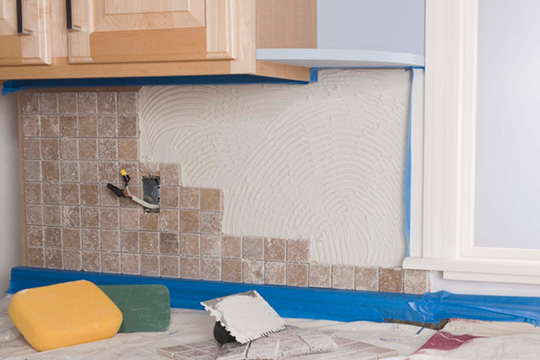Not having enough power isn’t just an inconvenience — voltage drop-offs may actually damage sensitive electronics, so having plenty power is important to electrical home safety.
Even with enough power, you may need additional outlets to avoid relying on a tangle of power strips and extension cords — a potential safety hazard.
The Cost of Upgrading Electrical Service
The standard for household power used to be 60 amps. But modern homes may need as many as 200 amps to run air conditioners, computer equipment, high-definition televisions, and high-tech home automation devices.
The cost of upgrading your existing electrical service panel to a 100- or 200-amp panel is $800 to $3,000.
New Wiring: Open Your Walls (and Your Wallet)
To handle increased electrical loads, it’s likely you’ll also need to upgrade electrical wiring, especially if your house is more than 40 years old.
Upgrading your electrical wiring is a big job because the wires are located inside of walls, where they are difficult to get at without opening up walls. The price for a whole-house rewiring job–including opening up walls, running new wires, connecting switches, outlets and fixtures, and then repairing the mess–is $3,500 to $8,000 for an average-sized home.
For a larger home, or a house with restricted access to a crawlspace and exterior walls, the cost may reach $20,000 and more for labor and materials.
Related: Find and Prevent Electrical Fire Dangers in Your Home
Rewire When the Time is Right and Save
Rewiring can be a messy and expensive proposition, but with a little upfront planning you can minimize the disruptions and even turn the job into an opportunity to add features that will increase the value of your home.
The best time to rewire is during a remodeling project, such as renovating your kitchen or adding a family room, when subcontractors are opening up your walls anyway. That way, your electrician has easy access to the walls, and refinishing walls will be part of the larger remodeling project–not just the rewiring.
Plan Ahead for Your Future Power Needs
Structured wiring is a smart investment and may be a marketing advantage if you should decide to sell your home. Structured wiring is a generic term for any heavy-duty electrical and data cables designed to handle the latest entertainment and communication devices–and those yet to be invented–including phones, Internet, and household heating and lighting systems.
One way to estimate the cost of structured wiring is to determine the square footage of your house. Multiply that figure by $2.
While a standard electrical upgrade essentially maintains the value of your home, adding structured wiring can increase it. According to a 2009 study by the Consumer Electronics Association and the National Association of Home Builders Research Center, almost 50% of homes built in 2008 included structured wiring, a sure sign of its growing value to home owners.
